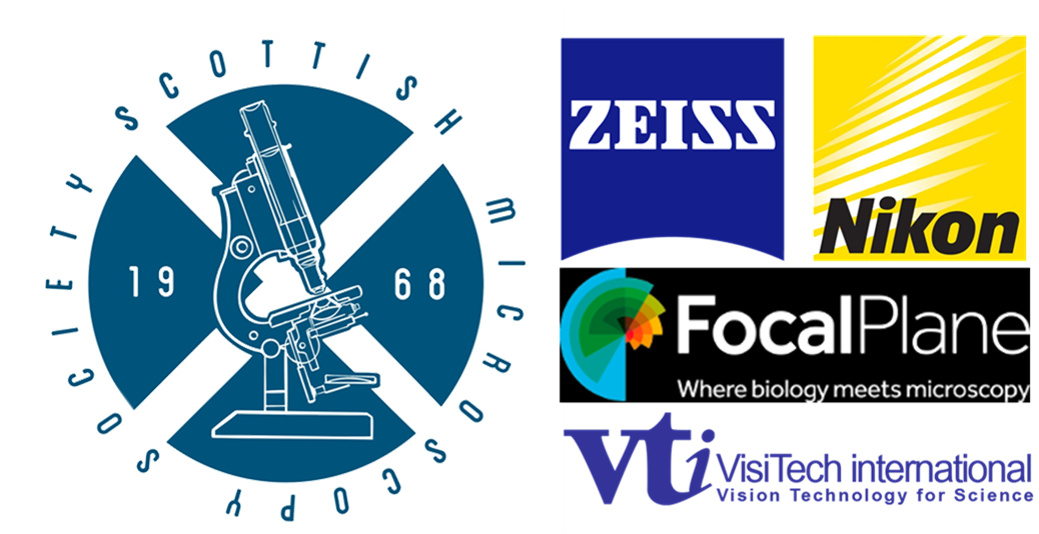SMS 2022 Image Competition
Video Competition
Well done to Dr Simona Buracco, a post doctoral researcher at the CRUK Beatson Institute, for their winning entry of ‘Dancing in the Dark’. Simona won the £50 prize
Winner: Dancing in the Dark
Dr Simona Buracco, CRUK Beatson Institute
Dictyostelium discoideum cells expressing LifeAct-GFP or mCherry-WASP and migrating under agarose following a folate gradient. Cells were imaged using the LSM880 with Airyscan.
Competition Entries
1. Vascular Calcium Signalling Upon Gut Damage
Jade Phillips, CRUK Beatson Institute
Ex vivo imaging and culture of the drosophila posterior midgut following 6-16 hours post Pseudomonas entemophila infection. A calcium signal (GFP) is detected using the genetically encoded GCamp6s sensor in the tracheal tissue (expressing TdTomato) which is homologous to the mammalian vasculature. This signal is essential to enable remodelling of the vasculature following damage and is absent in conditions of homeostasis.
2. The Building Blocks of Bone
Charlotte Clews, Roslin Institute, University of Edinburgh
Osteoblast cell line transfected with fluorescent PHOSPHO1-mNeonGreen fusion construct, showing the activity of PHOSPHO1 within the cell, and at peripheral cellular projections. A closer look at the projections reveals small spherical objects being transported down and released, possibly showing the first evidence of matrix vesicles (inside of which PHOSPHO1 is found) which are key instigators of bone mineralisation.
3. The Scream
Dr Chiara Pirillo, CRUK Beatson Institute
Immunofluorescent Ce3D multiplex volume image of precise-cut mouse lung section post influenza-A infection. The “scream” is a big bronchia in the middle of the section surrounded by MHCII (magenta), CD4 T cells ( green and pail blue), B cells (Red), macrophages ( dark orange) and CD11c (pale orange)cells. Imagine was taken using Zeiss LS880 on lambda mode, each fluorochrome separated by using spectra unmixing and video created using imaris
4. Human Defense vs Cancer Cells, who wins?
Dr Beatriz Diaz Bello, INSERM
The movie shows dozens of primary natural killer (NK) cells from a human blood sample swarming around the breast cancer cells (MCF7) , attaching, and effectively destroying them. With the presence of antibodies that increase the killing efficiency of the NK cells, we witness the remarkable process of cellular warfare. From the initial stages of attack to the ultimate victory of the NK cells, the movie captures the dramatic destruction of the cancerous cells in a visually captivating and scientifically informative way, making it a must see film for anyone interested in the power of the human body to fight off disease. This approach get us an step forward in the development of the immunotherapy strategies. This timelapse is a composite between brightfield imaging (gray) and two-channel epifluorescence (red and blue). The Propidium Iodine dye shows the nuclei of the dead cells in red and the Hoechst 33342 dye the nuclei of the living cells in blue. The objective used is a Zeiss plan-apochromat 20x/0.8. The pixel size is 0.3112 micrometers. Both cell types are maintained alive and active for hours and observed live with a simple epifluorescence microscope.
5. Xmas Light Show
Dr Xun Zhang, University of Strathclyde
Intracellular Ca2+ of Intact smooth muscle cells is visualized by a Ca2+ indicator Cal-520. Global Ca2+ waves across the tissue is triggered by phenylephrine that evokes Ca2+ release from cells’ internal store. Pseudo colours represent Ca2+ signals propagate within and across cells. Red colour represents the Ca2+ signals accurred 2 sec after green. Video play speed: 500 fps. Scale bar: 25µM. Rig: Andor iXon888 EMCCD camera; Nikon FN-1 microscope; 60× water dipping lens; CoolLED pE-4000 light source.
6. The Dicty Rainbow
Dr Peggy Paschke, CRUK Beatson Institute
Dictyostelium cells were starved for 4h and allowed to crawl under a thin layer of agarose. The cells are in this stage of their life cycle responsive to the chemoattactant cAMP that was mixed in the agarose to promote migration under the agarose layer. The cells are making a self-generated gradient by breaking down the cAMP in the agarose. This results in the formation of a destinct wave of migrating cells (thin band of cells). The movie shows six different time points displayed in six different colors (LUTs). The movie was recorded on a Zeiss 880 Airyscan confocal microscope with a 10x air objective. The cells are expressing the fluorescent Flamindo2 reporter.
7. Dancing in the Dark
Dr Simona Buracco, CRUK Beatson Institute
Dictyostelium discoideum cells expressing LifeAct-GFP or mCherry-WASP and migrating under agarose following a folate gradient. Cells were imaged using the LSM880 with Airyscan.
8. Cells Forming Shapes
Dr Jamie Whitelaw, University of the West of Scotland/CRUK Beatson Institute
HT1080 cells seeded and spreading onto Primo printed shapes. The images were acquired on a Nikon TE 2000 Timelapse microscope at the Beatson BAIR facility. Images were taken every 10 minutes over 18 hours at 10X magnification. Playback speed 7 fps.

Get in touch with the Scottish Microscopy Society!
Feel free to contact us or join our mailing list using the contact form below.

